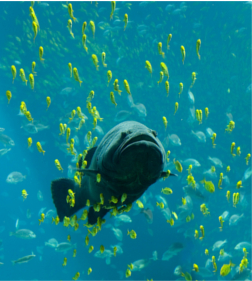- Series:Animals, Creation, God’s Design, Transcript English
Genesis 1:21
“And God created great whales, and every living creature that moveth, which the waters brought forth abundantly, after their kind, and every winged fowl after his kind: and God saw that it was good.”
 The late evolutionary biologist and paleontologist Stephen J. Gould is rumored to have once said, “There is no such thing as a fish.” What, you might ask, would make such a man say this? Has he not been to the aquarium?
The late evolutionary biologist and paleontologist Stephen J. Gould is rumored to have once said, “There is no such thing as a fish.” What, you might ask, would make such a man say this? Has he not been to the aquarium?
Gould was making a serious point. Although we would have disagreed with him about his evolutionary position, there is no doubt that Gould knew a great deal about fish. He had studied them all his life. So the point he was making is this: The classification “fish” is far too broad to be meaningful.
When I became a public school teacher in 1983, we taught the students that there were five classes of vertebrates: animals with backbones – and these were mammals, reptiles, birds, amphibians and fish. By this, students were taught that the supposed common ancestor of all vertebrates evolved into these five classes. Following Gould’s work, evolutionists now believe that fish actually comprise three classes – jawless fish, cartilaginous fish and bony fish, which are as different from each other as they are from mammals, rendering the term fish useless.
Creationists think that even the term mammal is too broad. Wolves and lions, for example, have no common ancestor, though lions and tigers do. So higher grouping into classes is merely for convenience. Gould did creationist biologists an unwitting favor by discarding the term fish. In contrast, biblical classification of animals groups them by clear similarities, which is why God made whales the same day as all fish. Author: Paul F. Taylor
Prayer: Thank You for the diversity of the creatures that You made, Lord. And thank You that You placed us, as humans, in dominion over them to be faithful stewards under You. Amen.
Ref: Encyclopaedia Britannica, < https://www.britannica.com/animal/fish >, accessed 11/27/2018. Image: CC BY-SA
